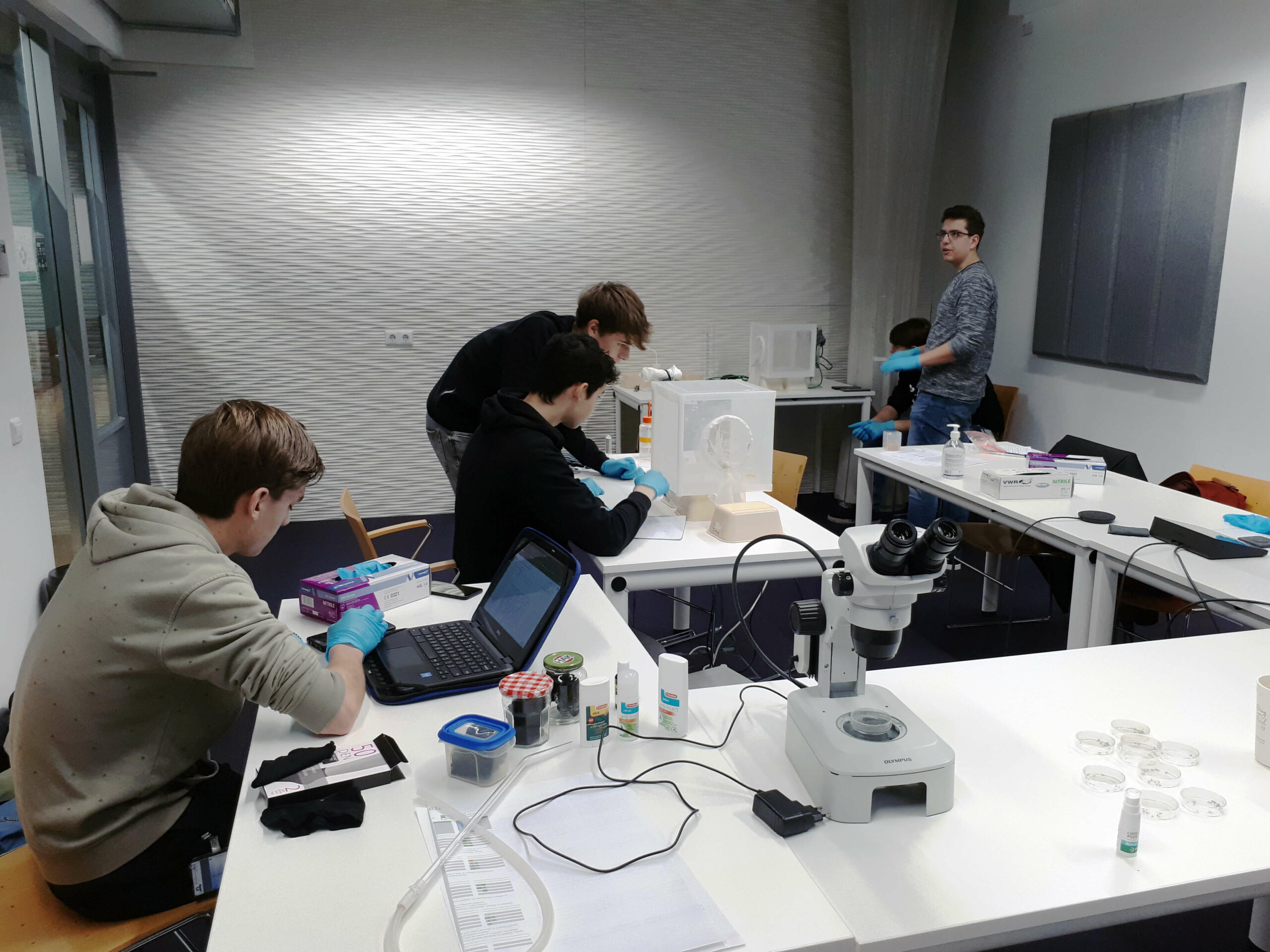Every year a workshop is hosted by Jeroen Spitzen and myself (Tessa), to help high-school students with their school research projects, called ‘profielwerkstuk’. During the workshop, students get the opportunity to collect data, get a tour of our mosquito rearing and experimental facilities, and have the possibility to ask their questions to the mosquito experts. Jeroen has been organizing this practical for more than 10 years!
The goal of the experiment is to study the attractiveness of certain animal- or human odours to female mosquitoes. Besides they can look into factors that can enhance or reduce the attraction, like lifestyle (eating lots of garlic, smoking parents) or mosquito repellents (like DEET or home-made concoctions). Every year the students get very creative in making up their own treatments.
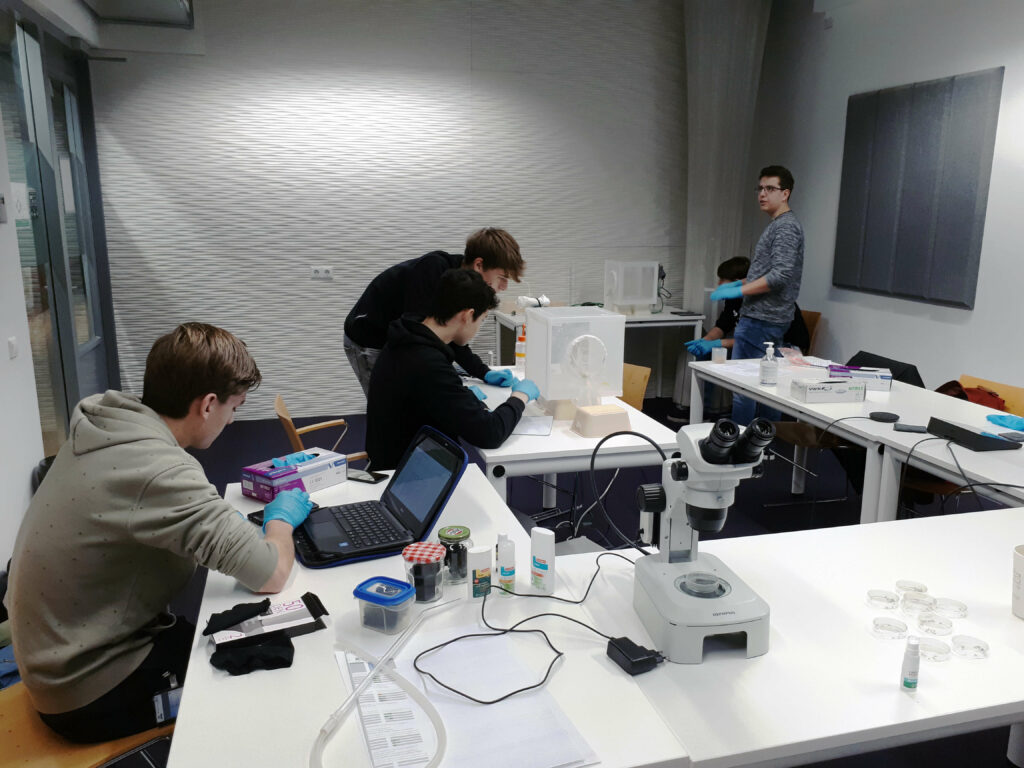
The students collecting their data: counting the number of mosquito landings
This year high-school students from the Kalsbeek College, Woerden, and Christelijk College Groevenbeek, Ermelo, were wondering if there were differences in attraction between persons, and if they could reduce the attraction of the most attractive person with DEET, eucalyptus- or citronella oil. Mosquitoes used during this practical were female malaria mosquitoes (Anopheles coluzzii). Results: there are certainly differences between persons, and the only repellent that seemed to work really well was DEET. We had a good discussion about the importance of a good negative control and having enough replicates.
The set-up is very straightforward. You place an aquarium heater in a water-filled cylinder. You add an air pump to get equal temperature distribution across the cylinder. The temperature represents the skin temperature of the foot (34oC). You mark a 5 x 5 cm square on the mosquito cage using pushpins. Then you bind a sock worn by a person with the treatment of choice (or a control sock that was never worn!) on the cylinder, place it very close to the mosquito cage and count the number of mosquito landings in the 5 cm2 area for three minutes.
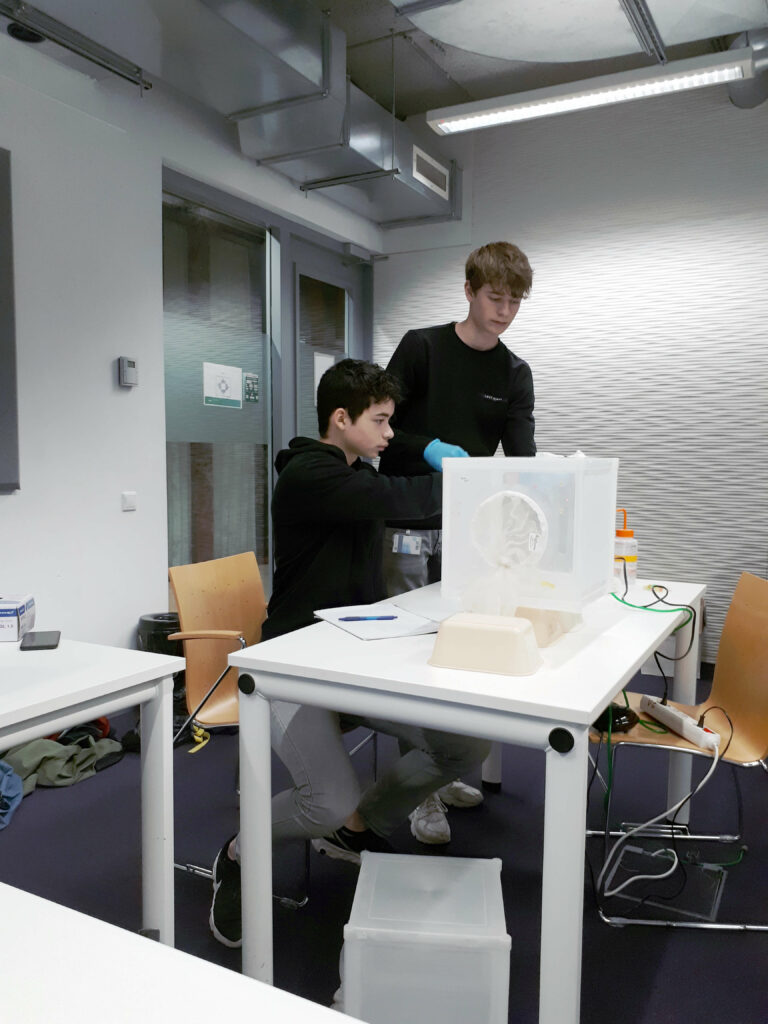
The set-up can’t be touched without gloves, otherwise, you could transfer your own skin odours 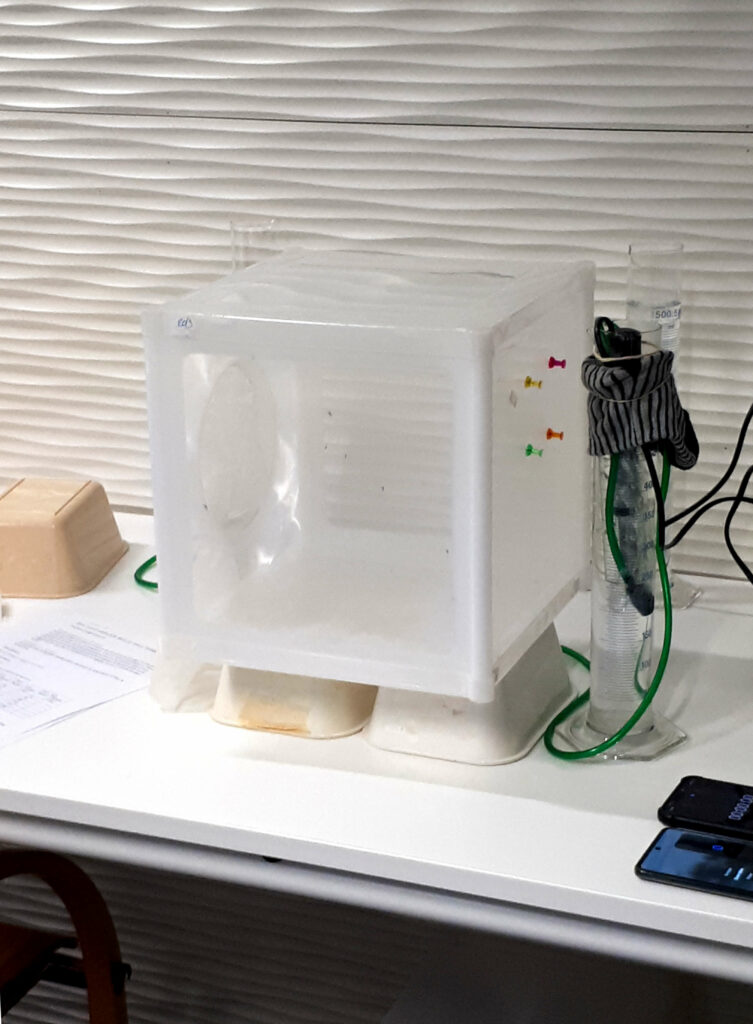
The set-up, with a worn ‘dirty’ sock surrounding the cylinder
We hope we can inspire these students, you never know where they will end up! Fun fact, I did this exact practical given by Jeroen in 2010. It was my first mosquito experiment and it got me so enthusiastic that years later I was able to start my PhD in the group and do much more! ;). To prove it, see the picture below from 2010.
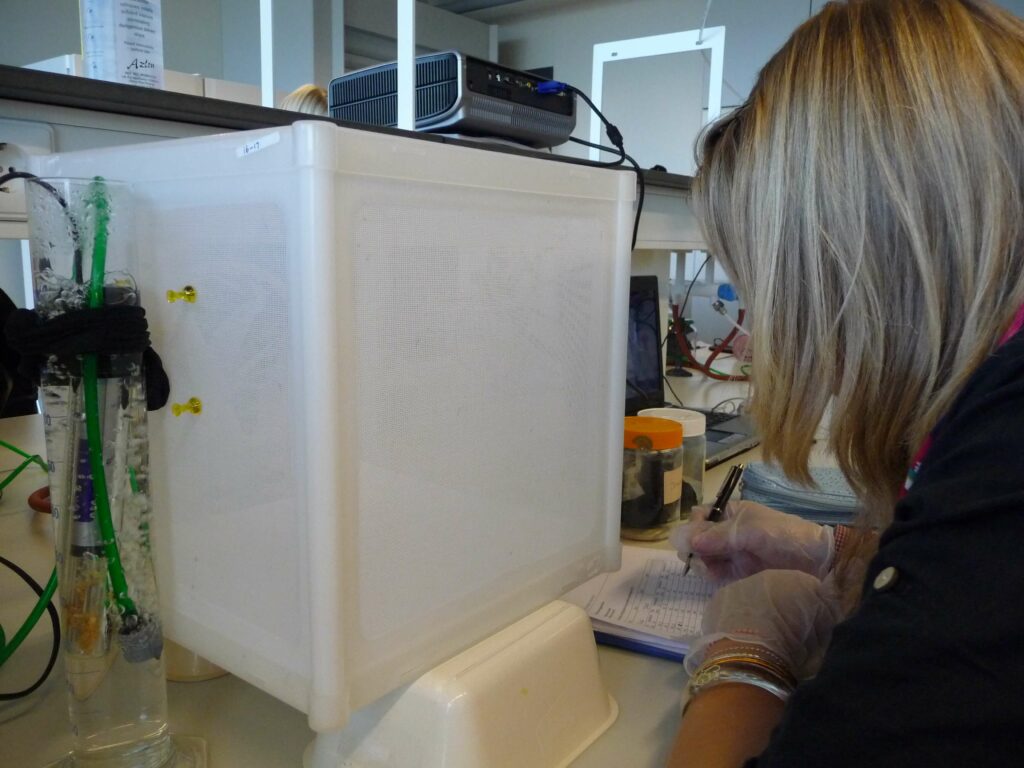
Tessa counting mosquito landings all the way back in 2010
